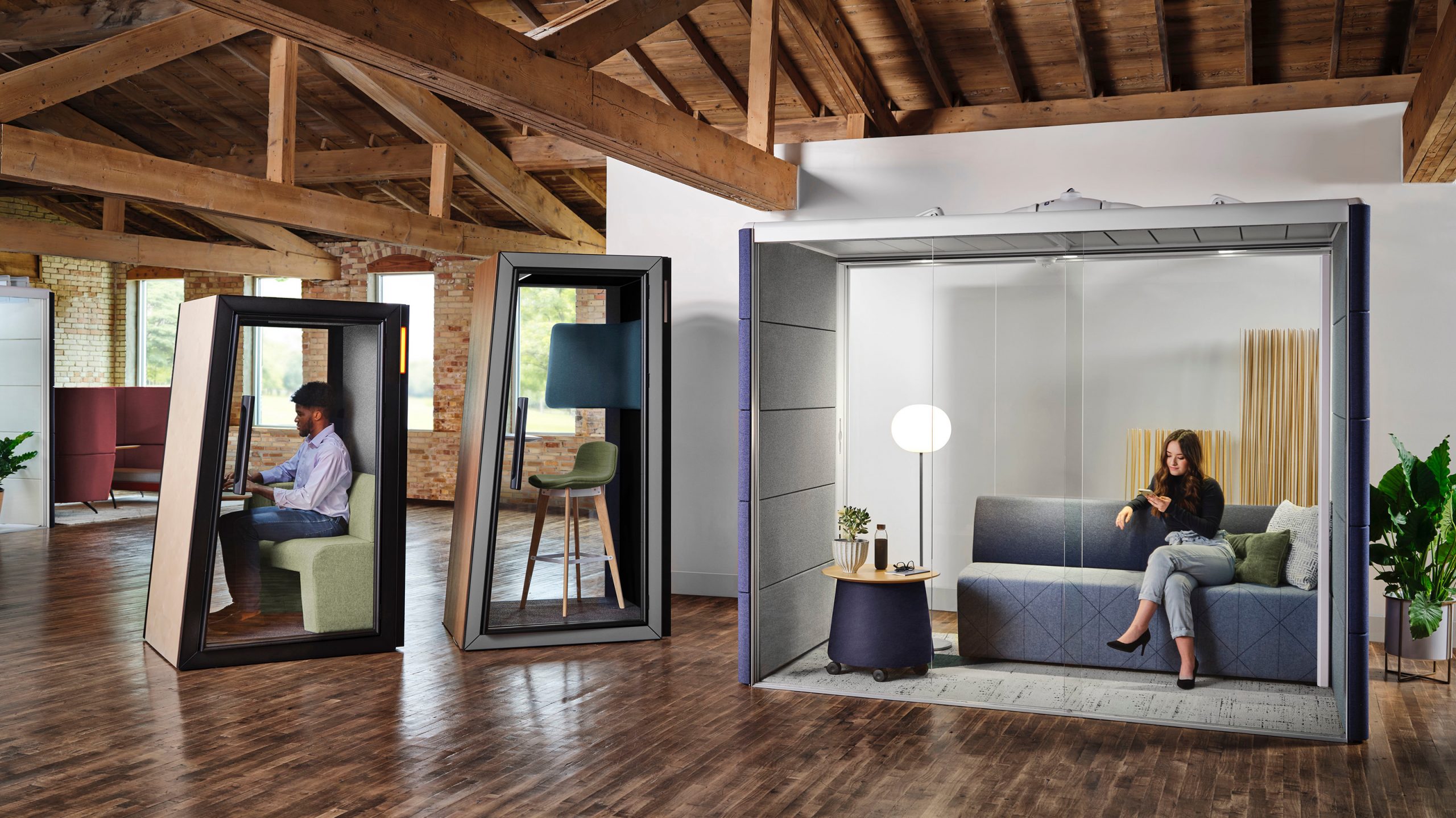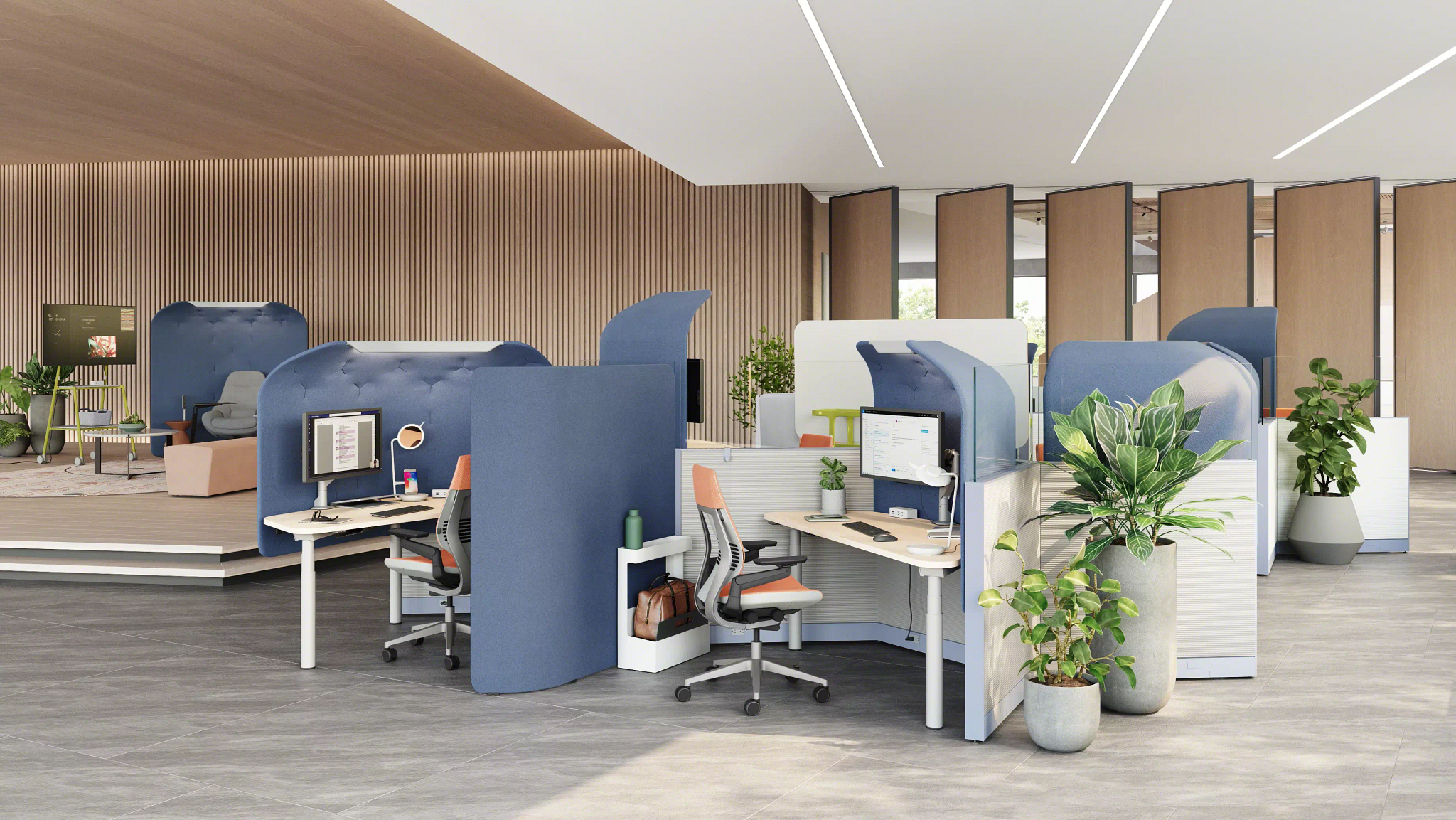COVID-19 disrupted our assumptions about office design and employee experience—but also reinforced why diverse and organic spaces that bring people together for working and learning are critical for social and professional development.
One of our key learnings from working elsewhere during COVID-19 is an increased awareness and sensitivity to noise levels. While at home, some workers took daily walks with the dog, joined Zoom meetings from a quiet, comfortable spot—while others found household sounds distracting.
As workers return to their communal places of work, they are more attuned to sensory experience and noise levels. Organizations are leveraging office design and a range of furniture solutions to help meet worker expectations.
The Office as a Destination and Experience
Creating a destination workers feel drawn to means providing a more holistic experience; one that serves a range of needs and sets the stage for growth and development. To nurture collaboration and social interactions, organizations have historically provided collaboration rooms and café and lounge areas. This allows workers to move around to best match their work, respite or social needs.
For moments of deep concentration and quiet solitude, a new crop of solutions gives workers more autonomy over their acoustic experience.

Open Offices Tend to be Noisier
Prior to the pandemic, businesses had pivoted away from open office floor plans due to the higher level of noise and distractions. In fact, a 2019 workplace survey conducted by Gensler found worker perception of the office as a place for getting work done was at an all-time low because of the noise and inability to focus.
Dissatisfaction with open offices, or what Gensler refers to “densification,” can be traced back at least a decade to 2013 and grew each year since. This is not surprising given that in 2010, U.S. office density averaged over 240 square feet per person, but then dropped to an average of 214 square feet and sometimes much lower right before Covid hit (Axios).
Peace and Quiet is In
A December workplace survey found that 83% of employees said they would return to the office at least one more day per month if they could access quiet spaces for focused work. The low din of conversations combined with the ubiquitous Zoom and Teams calls throughout the day can make workplaces very noisy.
One way is to configure office spaces with small, private rooms for focused work and Zoom meetings, but another is looking at ways to improve acoustics and dampen noise. Pink noise is described as an artificial jumble of frequencies that can be adjusted to the number of people in a space to mask what you can hear; this sound-masking solution has become increasingly popular among businesses.
“We’re finding that what clients are placing a large emphasis on, as more people trickle back to working in the office, is privacy – specifically speech privacy. Sound masking is now becoming a much larger part of the interiors conversation because it allows clients to provide their employees with increased speech privacy within a more open setting.”
Brad Nemetz, Architectural Consultant, Atmosphere
Another alternative is dividing space into smaller ‘sections’, but not necessarily with a cube farm. Meta, which owns Facebook, Instagram and WhatsApp, initially trialed traditional cubicles but quickly realized cube walls did not absorb enough noise. So the company commissioned its own solution made of a soft material that absorbs sound instead of reflecting and echoing it around the office. What they call “The Cube” is a curvy-walled, movable cubicle that features three soft screens made of felt-like recycled PET plastic that envelop a worker’s desk. According to the company, The Cube has reduced sound levels by 20 decibels.

Whether it’s offering peace and quiet, private rooms, or collaboration hubs, businesses have the unique opportunity to create a space that is aligned with what their workers need and expect. Those that take advantage of this opportunity will be better equipped to bring workers back with as little friction as possible.
If you’re looking for frictionless office designs that will excite, inspire and motivate your workers, please contact us.

